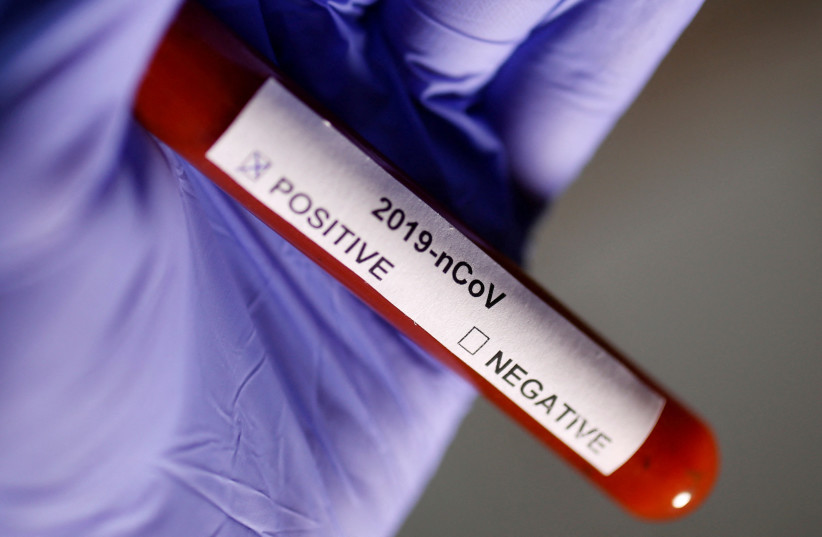A new coronavirus variant known as XBB.1.5 has begun taking over in the US in recent weeks, with the World Health Organization (WHO) calling it "the most transmissible variant that has been detected yet" on Wednesday.
According to the US Centers for Disease Control (CDC), XBB.1.5 is projected to account for about 27.6% of cases in the US and is slowly becoming dominant compared to the currently leading variant BQ.1.1, which is projected to make up about 34.4% of cases nationwide. Earlier, the CDC had projected that XBB.1.5 made up as much as 40% of cases, but revised that figure after receiving additional data.
The variant is spreading relatively quickly, as it accounted for only about 11.5% of cases in the week ending on December 24 and only 8% of cases in the week ending on December 17. On average, the number of cases caused by the variant is doubling every eight days.
XBB.1.5 is a descendant of the XBB.1 variant which in turn is a descendant of the XBB variant which was formed by the recombination of two descendants of the BA.2 variant.

New mutation gives XBB.1.5 its edge
The Bloom Lab, which studies the molecular evolution of proteins and viruses, explained on Twitter that while the new variant's parents were notable as they were fairly transmissible and were good at escaping antibodies, the next variant is much more transmissible than its forebears.
The difference between XBB.1.5 and its parent, XBB.1, is that it traded a mutation known as F486S that helped with antibody escape but harmed its ability to spread for a different mutation known as F486P which kept the ability to escape antibodies but should be better at binding to human cells at the ACE2 receptor.
The Bloom Lab noted that it is still unclear if the higher transmissibility of XBB.1.5 will cause a spike in total cases or just in its fraction of total cases.
The WHO noted in a press conference on Wednesday that there has been an increase in hospitalizations in the Northeast part of the US, where XBB.1.5 is most prevalent, but added that many other respiratory viruses are also circulating at the moment so it is still unclear if the variant is the main cause of the increase.
While the variant is spreading rapidly in the US, it is still relatively absent elsewhere around the world, although it has been detected in at least 28 other countries.
The European Center for Disease Prevention and Control (ECDC) noted on Thursday that while the variant may grow similarly in Europe, it also may not as some major differences in variant circulation have been seen between North America and Europe throughout the pandemic.
Additionally, any impact the variant may have will likely not be seen in the coming month, as the variant is still circulating at relatively low levels in Europe.
The ECDC noted that the mutation which has likely given XBB.1.5 its growth advantage has been relatively rare during the pandemic as it requires two amino acids to change. Other variants have featured this mutation in the past but failed to become successful, so further investigation is needed to understand why this specific variant is succeeding where others failed.
Outbreak in China continues to grow, with BA.5.2 and BF.7 pushing surge
The rise of the new variant comes as China continues to be hit by a large coronavirus outbreak spurred by the sudden removal of strict preventative regulations. Reports from the country indicate that hospitals are overcrowded and that long queues were building at crematoriums due to the high number of deaths caused by the outbreak.
While China has slowed the sequencing of new cases, the WHO reported last week that most of the cases found in the country were attributed to the BA.5.2 and BF.7 variants.
The WHO has called on China and countries around the world to continue to be vigilant and to monitor and report genetic sequences in order to allow the global community to assess which variants are circulating to understand the risks they could bring.
Health officials around the world have expressed concerns that the large outbreak in China, as well as smaller outbreaks continuing around the world, could provide more opportunities for the virus to evolve, especially as people begin to neglect protective measures, such as vaccination and avoiding crowds.
In a preprint study published online late last month, a team of Chinese researchers found that XBB.1.5 could even avoid antibodies created in patients who were both vaccinated and infected with the BF.7 and BA.5 variants.
The researchers noted as well that the new variant's ability to strongly bind to the ACE2 receptor may help it tolerate further mutations that will make it better at escaping antibodies.
